With comparatively stable CO2 levels over 10,500 years, temperatures still fluctuated within a range of -4 to +3 °C.
Yet, German Constitutional High Court preposterously claims there is an “almost linear relationship” between CO2 and temperature.
Junk mandated to “science” by law?
Alpine glaciers: spoilsports for the CO2 climate hypothesis
The CO2 introduced into the atmosphere by humans through the burning of fossil fuels is declared by today’s climate science as a “greenhouse gas” to be the decisive factor in an impending climate catastrophe. It is claimed that “never before” temperatures on earth had been rising at such rates as nowadays. The Alpine glaciers are often referred to as key witnesses to this argument. This “eternal” ice is said to be under existential threat from climate change. The “death” of glaciers is mourned on radio, in TV-shows and in the printed press. To prevent this impending catastrophe, the advanced civilization to which we owe our comparatively healthy and carefree lifestyle must be scrapped: let’s do away with coal, oil, gas and nuclear energy, with cars, steel, aluminum, concrete….and as a consequence also with modern medicine.
Fig. 1:: Just as its peers in the Alps, the Great Aletsch Glacier – seen here from the Jungfraujoch – is being stylized as a “crown witness” of CO2-induced climate change (Photo: Private)
The United Nations assumes that the CO2 emissions introduced into the atmosphere by humans are warming the climate due to a “greenhouse effect”. This greenhouse effect is said to endanger our existence. This thesis is propagated by its offshoot, the Intergovernmental Panel on Climate Change (IPCC), as irrefutable scientific truth. Claims to this effect are constantly repeated in countless scientific and journalistic publications. It is particularly emphasized that it is imperative to “recognize CO2 as the principal climate control knob” 1).
In the meantime, clever representatives of the “green” climate movement have ensured that this view has even been enshrined as an incontrovertible truth in supreme court rulings by the German Federal Constitutional Court and the European Court of Human Rights (ECtHR), among others.
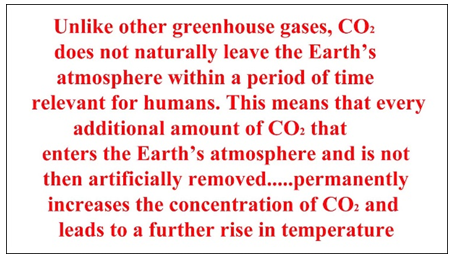 Figure 2: The so-called “climate judgment” of the German Federal Constitutional Court 2) elevates the central IPCC thesis on the alleged harmfulness of CO2 to a nearly incontrovertible truth with quasi constitutional status (graphic: author).
Figure 2: The so-called “climate judgment” of the German Federal Constitutional Court 2) elevates the central IPCC thesis on the alleged harmfulness of CO2 to a nearly incontrovertible truth with quasi constitutional status (graphic: author).
Since this ruling, Germany is on a one-way highway to hell into an economic and social abyss. From now on all governments are obliged to reduce CO2 emissions to zero by 2045 3), regardless of the impact this has on the economy and the well-being of the population. Any fanatic NGO can sue the German state if it is not content with the reduction achieved. Worse still, the current greens, socialists and liberals government is already preparing further legislation to deny future governments any opportunity to revise this course again.
A law currently being prepared by (Liberal) Minister Buschmann is supposedly intended to “protect the constitutional court from undemocratic successor governments.” In reality, the new law will prevent even democratic majorities from overturning the Federal Constitutional Court ruling and the resulting regulations. Without any regard for the misery this will imply for the population.
Friedrich Merz and his conservative CDU have already signaled their support for this project.
“Natural” CO2 levels of the past
But let’s now have a closer look at the loudly proclaimed “climate impact” of CO2. According to the current state of climate science 4), the CO2 content of the atmosphere has always been below 300 ppm over at least the past 800,000 years. At times it has even been approaching the 170 ppm threshold below which some plants might be unable to survive 5).
How “healthy” were the Alpine glaciers from about 120,000 years ago until today. Over this time, the CO2 content fluctuated in a rather narrow range between 180 and 285 ppm, Figure 3.
Figure 3: The evolution of the CO2 content in the atmosphere over the last 120,000 years as determined by official climate science. The steep rise to today’s values only occurs abruptly at the very end of the graph. This extreme outlier is said to be causing a “glacial extinction” in the Alps (Graphic: author, with data from Our World in Data 6))
The evolution of CO2 levels shown in Figure 3 corresponds to what the IPCC calls the “stable pre-industrial state”, to which the German Federal Constitutional Court also refers in its “climate judgment”. In view of the fact that “climate science” describes the CO2 content of the atmosphere as the “decisive control knob for the climate”, the Alps should have had a stable climatic development and a correspondingly stable glacier cover before the start of significant human CO2 emissions.
When glaciers become climate crown witnesses
Fortunately, there is a very comprehensive study on the development of Alpine glaciers 7), in which their extent and mass were determined using complex simulation models. There is a corresponding short film on YouTube lasting approx. 2 minutes 8), which graphically summarizes the development of the last 120,000 years. Despite all reservations about such complex simulations, it should be noted that comprehensive geological and paleogeological studies of the entire Alpine region were used as “guard rails” for the stability of the models used. This also applies to the degree of correspondence between the end of the simulation run and the currently known state of the Alpine glaciers. Below are some still images from this video.
Figure 4: The current glaciation of the Alps. At this scale, significant glacier cover can only be seen around Mont Blanc and the Bernese Alps. At the bottom of the image, the temperature differences to today’s level (left scale axis) and the ice volume in cm sea level equivalent on the right scale can be seen in black (screenshot from https://www.youtube.com/watch?v=TXzExbdHuDM)
Figure 5: The ice cover of the Alps around 120,000 years ago, in the middle of the warm Eemian interglacial period (screenshot from https://www.youtube.com/watch?v=TXzExbdHuDM)
The comparison of Figures 4 and 5 shows that the ice cover of the Alps around 120,000 years ago was considerably less than it is today. This fact puts into perspective the terms “perpetual ice” and “dying glaciers” so often used today by the propagators of CO2 climate alarmism. At that time, the Eemian interglacial period 9) prevailed worldwide, one of the periodic warm interruptions of the ice ages that had prevailed for around 2.7 million years. It began around 126,000 years ago and lasted around 11,000 years. The temperature in Europe at that time was several degrees above the pre-industrial average temperature (until around 1850). During the entire Eemian period, the CO2 content of the atmosphere only fluctuated within a narrow range between 275 and 286 ppm. There is therefore no evidence of CO2 as the supposedly most important control knob for the climate in connection with the Eemian warm period and the subsequent glacial period.
The back and forth of the ice
The last glacial period was anything but uniform, quite the opposite. Both the temperatures and the ice volume fluctuated within wide limits, while the ice masses repeatedly buried and released enormous swathes of terrain, even outside the actual mountainous range. The following pictures give an impression of the occasionally extreme advances and retreats of the Alpine glaciers. The changing shoreline of the Adriatic Sea underscores that the sea level also fluctuated considerably during this time period.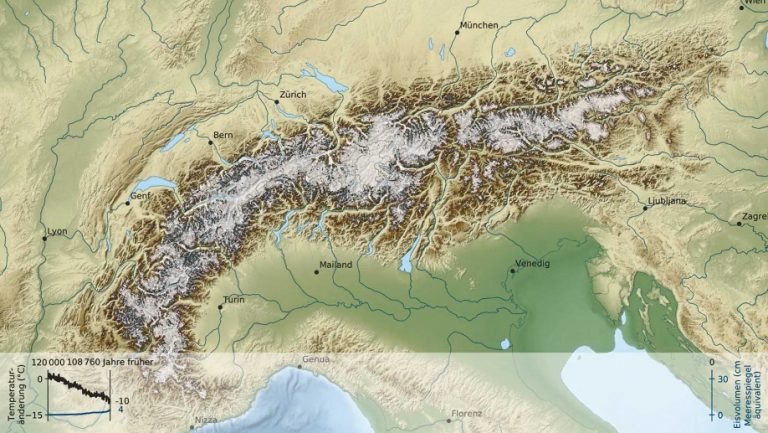
Figure 6: Ice cover of the Alps at the beginning of the last glacial period 108760 years ago. Temperatures had already fallen by a full 10 °C compared to today and the Alpine region would have become uninhabitable (screenshot from https://www.youtube.com/watch?v=TXzExbdHuDM)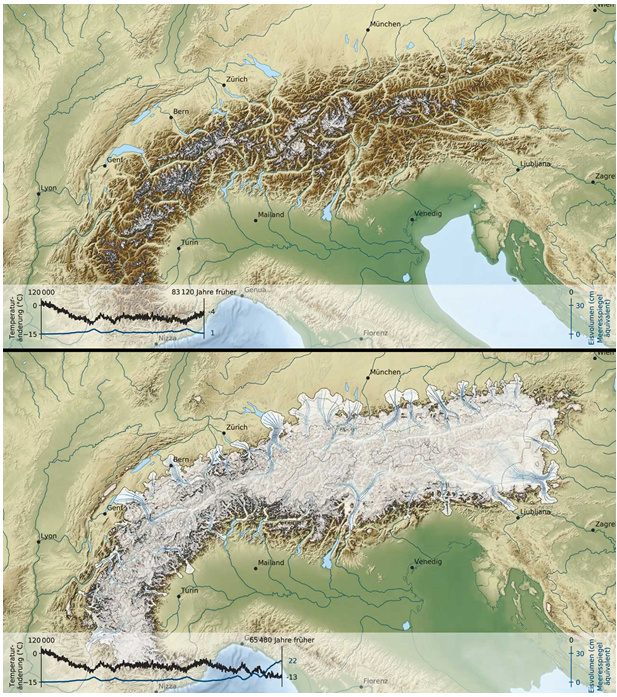
Figure 7: The glacial period was characterized by extreme swings in both directions. As the upper partial image shows, the ice cover had decreased considerably around 25,000 years after the beginning (Figure 6), and the temperature had risen by 6 °C compared to the previous stage. 17,000 years later, the Alpine region was suffocating under a gigantic ice sheet, and the temperature was 13 °C below today’s level. The northern Adriatic had almost disappeared from the map due to falling sea levels. (Screenshots from https://www.youtube.com/watch?v=TXzExbdHuDM)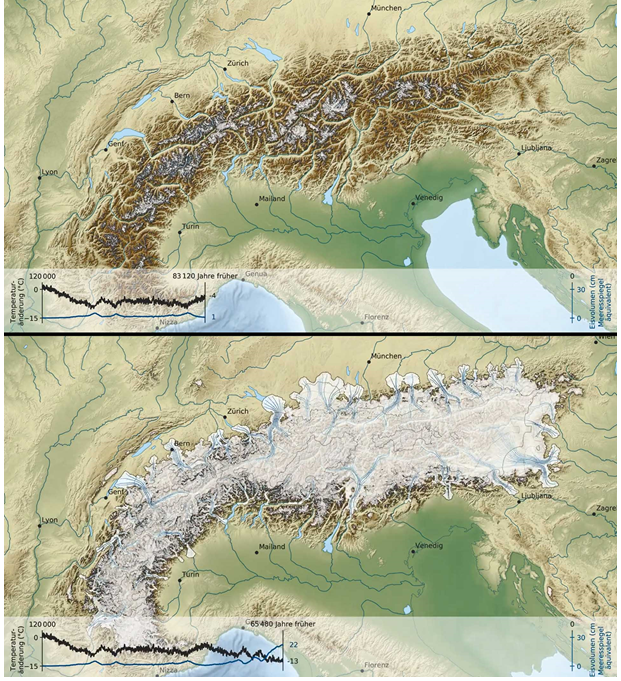
Figure 8: After further extreme fluctuations, the ice masses advanced far in all directions at the peak of the glacial period about 24,500 years ago. In the north they advanced as far as Munich, and Zurich, Bern and Geneva disappeared under massive ice fields. Temperatures were 12 °C below today’s level, and the Adriatic Sea can only be glimpsed at the bottom right of the image. (Screenshot from https://www.youtube.com/watch?v=TXzExbdHuDM)
Figure 9: The end of the glacial period was anything but even too. After the glaciers had already melted quite extensively around the year 14,240 with comparatively mild temperatures (upper image), the glaciers expanded considerably again around 12,500 years ago and temperatures fell again by 7 °C below today’s level (screenshot from https://www.youtube.com/watch?v=TXzExbdHuDM).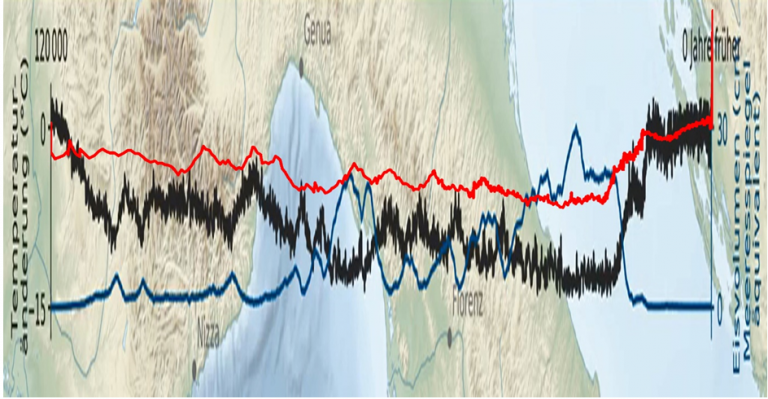
Figure 10: The joint representation of atmospheric CO2 content and temperature development over the course of the last glaciation period shows that the correlation between the two variables appears to be rather weak. In particular, the explosive rise in the red curve at the very end raises doubts. The course of the CO2 concentration with temperature can easily be attributed to outgassing or absorption due to higher or lower solubility in the sea in line with Henry’s law. An industrial influence can be ruled out except for the last 150 years or so. (Graphic: author + screenshot from https://www.youtube.com/watch?v=TXzExbdHuDM)
Figure 11: A closer look at the period of the last approx. 10,250 years – i.e. long after the end of the last glacial period and into the beginning of the industrial age (graphic: author + screenshot from https://www.youtube.com/watch?v=TXzExbdHuDM)
As shown in Figure 11, the average temperatures fluctuated considerably between the end of the last glacial period and the start of the industrial age. The range was between -4 and +3 °C compared to today’s average. In contrast, during this period, CO2 levels varied only within an extremely narrow range between 258 and 285 ppm. This does not really fit in with the purported correlation between CO2 and temperature, which has been declared an infallible truth by the highest German court. For comparison, here is another passage from the Federal Constitutional Court’s climate ruling:
“Up to what level and at what speed the temperature will continue to rise depends on the proportion of greenhouse gases in the atmosphere and thus largely on the amount of anthropogenically emitted greenhouse gases, especially CO2 emissions (IPCC, op. cit., pp. 17 f., 26). This is because there is an almost linear relationship between the total amount of greenhouse gases emitted and the rise in mean surface temperature (SRU, Demokratisch regieren in ökologischen Grenzen – Zur Legitimation von Umweltpolitik, Sondergutachten, 2019, p. 36)” (bold highlights added by the author).
History of Alpine glaciers does not support the CO2 greenhouse gas hypothesis
Climate science claims that there is a linear relationship between the CO2 content of the atmosphere, influenced by anthropogenic emissions of greenhouse gases, and temperatures on the Earth’s surface. The detailed investigation of the course of the last glacial period with regard to temperatures and ice cover in the Alps using complex simulations provides no evidence for this. Comparatively minor changes in CO2 levels in the atmosphere are probably due to temperature-related changes in the solubility of the gas in the oceans (Henry’s law).
The same applies to the period of the current warm period over the last 10,500 years or so. With comparatively stable CO2 levels, temperatures fluctuated within a range of -4 to +3 °C. The Alpine glaciers are therefore more like key evidence that the CO2 greenhouse gas hypothesis is treading on rather thin ice. Whatever it is that determines our climate, it is highly unlikely to be CO2!
Sources:
1) https://www.worldscientific.com/fmatter
2) https://www.bundesverfassungsgericht.de/.html
3) https://www.bundesregierung.de/breg-de/1913672
4) https://ourworldindata.org/table
5) Plant responses to low [CO2] of the past – Gerhart – 2010 – New Phytologist – Wiley Online Library
6) https://ourworldindata.org/grapher/co2-long-term-concentration?tab=table
7) https://www.researchgate.net/publication/Alps
8) https://www.youtube.com/watch?v=TXzExbdHuDM
9) https://en.wikipedia.org/wiki/Last_Interglacial
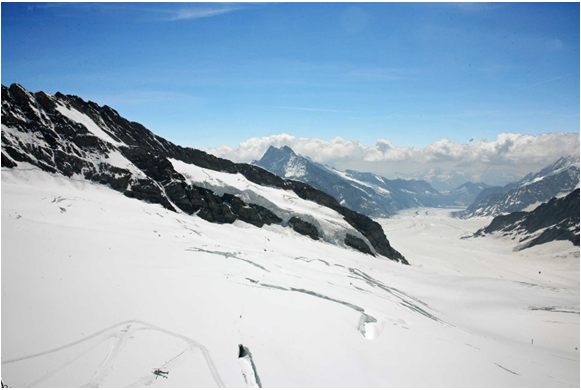
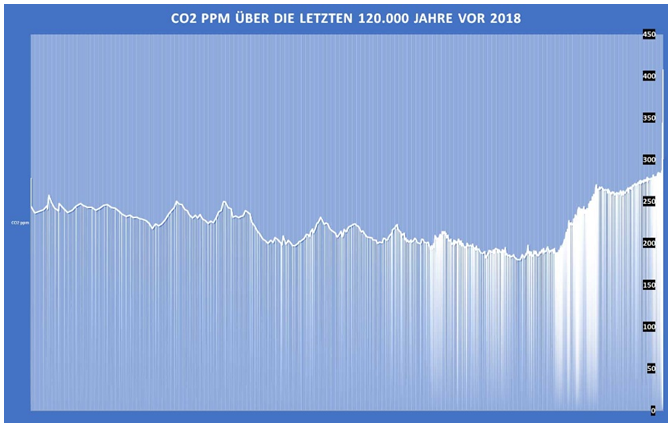
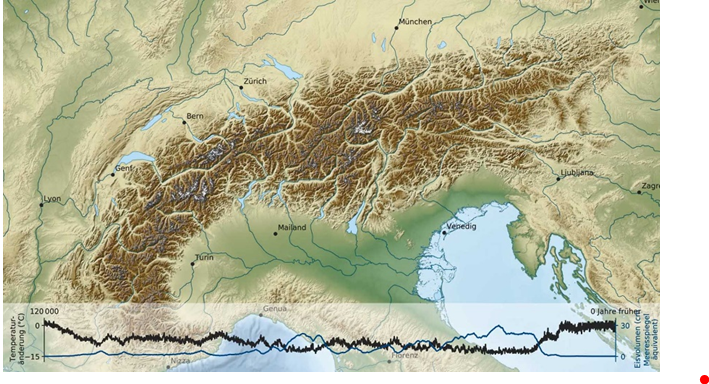
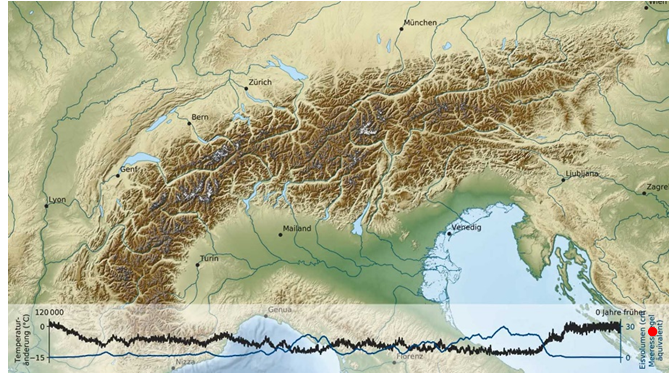
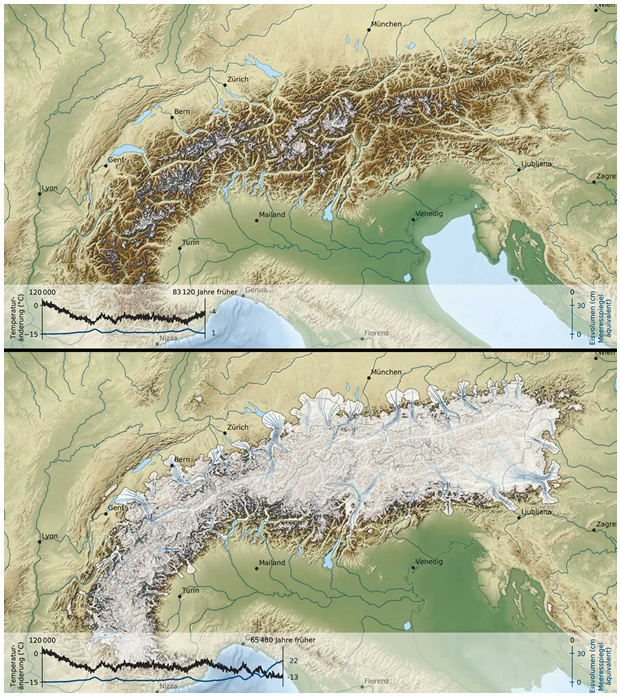
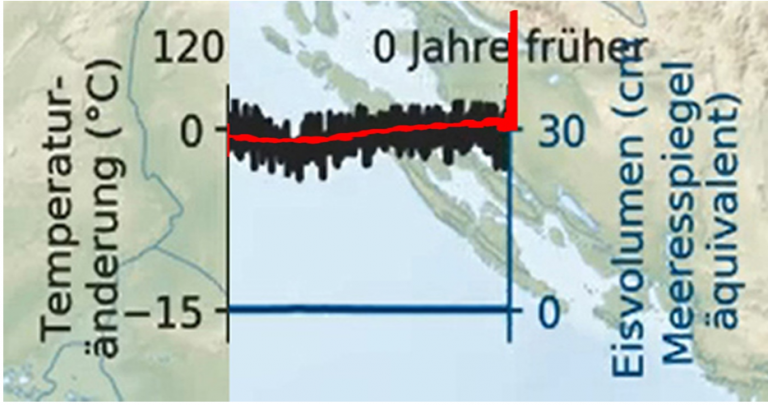





This is consistent with Alpine research done by Prof. em. Christian Schlüchter summerized by infographic below.
https://rclutz.com/wp-content/uploads/2020/02/06_infographic_wocc.png
Summer Temperatures (May – September) A rise in temperature during a warming period will result in a glacier losing more surface area or completely vanishing. This can happen very rapidly in only a few years or over a longer period of time. If temperatures drop during a cooling period and summer temperatures are too low, glaciers will begin to grow and advance with each season. This can happen very rapidly or over a longer period in time. Special thanks to Prof. em. Christian Schlüchter / (Quartärgeologie, Umweltgeologie) Universität Bern Institut für Geologie His work is on the Western Alps and was so kind to help Raymond make this graphic as correct as possible.
We are used to the fact that now is the political power who decides what science shall tell.
This was already common practice at Galileo’s time
Soon enough, facts will prove the High Court wrong.
The justices appear young enough that most will be
able to express contrition regarding the destruction of
Germany.
[…] From NoTricksZone […]